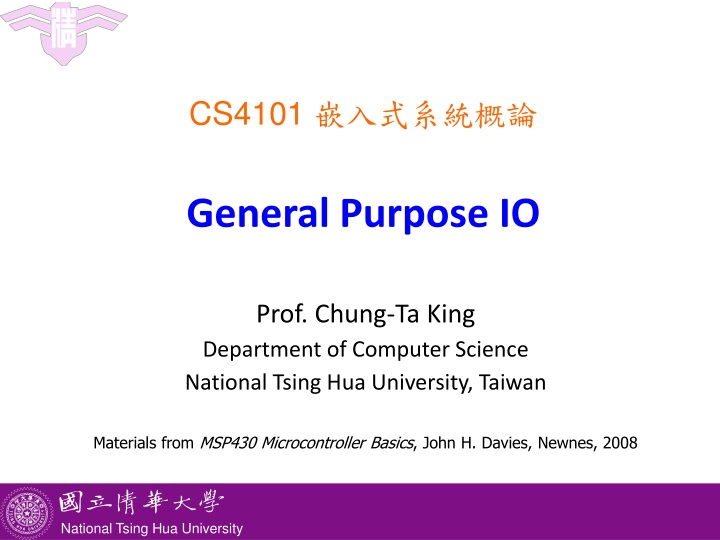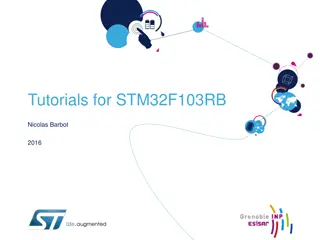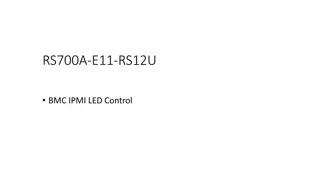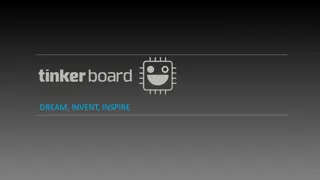
MSP430 Microcontroller Basics and GPIO Configurations
Dive into the fundamentals of MSP430 microcontrollers and learn about GPIO configurations, memory-mapped I/O, and programming techniques. Explore the GPIO ports, input/output registers, and practical examples for developing embedded systems efficiently.
Download Presentation

Please find below an Image/Link to download the presentation.
The content on the website is provided AS IS for your information and personal use only. It may not be sold, licensed, or shared on other websites without obtaining consent from the author. If you encounter any issues during the download, it is possible that the publisher has removed the file from their server.
You are allowed to download the files provided on this website for personal or commercial use, subject to the condition that they are used lawfully. All files are the property of their respective owners.
The content on the website is provided AS IS for your information and personal use only. It may not be sold, licensed, or shared on other websites without obtaining consent from the author.
E N D
Presentation Transcript
CS4101 General Purpose IO Prof. Chung-Ta King Department of Computer Science National Tsing Hua University, Taiwan Materials from MSP430 Microcontroller Basics, John H. Davies, Newnes, 2008 National Tsing Hua University
LaunchPad Development Board USB Emulator Connection Embedded Emulation 6-pin eZ430 Connector Crystal Pads Chip Pinouts Part and Socket Power Connector P1.3 Button LEDs P1.0 & P1.6 Reset Button 1 National Tsing Hua University
Recall: Sample Code for Output #include <msp430.h> void main(void) { WDTCTL = WDTPW + WDTHOLD; // Stop watchdog P1DIR |= 0x41; // set P1.0 & 6 to outputs for(;;) { volatile unsigned int i; P1OUT ^= 0x41; // Toggle P1.0 & P1.6 i = 50000; // Delay do (i--); while (i != 0); } } 2 National Tsing Hua University
Recall: Memory-Mapped I/O LED P1OUT No P3 for 20-pin devices X P1IN P1REN MOV.W #0x80,P1OUT 3 National Tsing Hua University
Configuring the I/O Ports Registers (Mem Addr) Functions Descriptions P1IN (0x0020) Port 1 input This is a read-only register that reflects the current state of the port's pins. P1OUT (0x0021) Port 1 output The values written to this read/write register are driven out to corresponding pins when they are configured to output. P1DIR (0x0022) Port 1 data direction Bits written as 1 (0) configure the corresponding pins for output (input). P1SEL (0x0026) Port 1 function select Bits written as 1 (0) configure corresponding pins for use by the specialized peripheral (for general-purpose I/O). P1REN (0x0027) Port 1 resistor enable Bits set in this register enable pull-up/down resistors on the corresponding I/O pins. 4 National Tsing Hua University
MSP430 GPIO GPIO = General Purpose Bit Input/Output 8-bit I/O ports Each pin is individually controllable Controlled by memory-mapped registers R1IN, R1OUT, P1.7 P1.6 P1.5 P1.4 P1.3 P1.2 P1.1 P1.0 I/O Port 1 Bit 7 Bit 6 Bit 5 Bit 4 Bit 3 Bit 2 Bit 1 Bit 0 5 National Tsing Hua University
PxDIR (Pin Direction): Input or Output P1IN.7 P1OUT.7 P1DIR.7 1 7 6 5 4 3 2 1 0 P1IN P1OUT P1DIR PxDIR.y: 0 = input 1 = output Register example: P1DIR &= 0x81; 1 1 6 National Tsing Hua University
GPIO Output P1IN.7 P1OUT.7 P1DIR.7 1 1 1 7 6 5 4 3 2 1 0 P1IN X P1OUT 1 P1DIR PxOUT.y: 0 = low 1 = high Register example: P1OUT &= 0x80; 1 7 National Tsing Hua University
GPIO Input P1IN.7 P1OUT.7 P1DIR.7 1 1 0 7 6 5 4 3 2 1 0 P1IN 1 P1OUT X P1DIR 0 Problem occurs if P1.7 is connected to a button! 8 National Tsing Hua University
Problem with Input from a Button When the button is pressed down (closed), MSP430 will detect a 0 from the pin When the button is up (open), what will MSP430 detect? Ans.: random value Floating 9 National Tsing Hua University
Typical Way of Connecting a Button The pull-up resistor Rpullholds input at logic 1 (voltage VCC) while button is up and logic 0 or VSS when button is down active low A wasted current flows through Rpull to ground when button is down This is reduced by making Rpull large enough, typically 33 k 10 National Tsing Hua University
Typical Way of Connecting a Button MSP430 offers internal pull-up/down resistor PxREN register selects whether this resistor is used (1 to enable, 0 to disable) When enabled, the corresponding bit of PxOUT register selects whether the resistor pulls the input up to VCC(1) or down to VSS(0) 11 National Tsing Hua University
GPIO Input P1IN.7 P1OUT.7 P1DIR.7 P1REN.7 Enable resistor Input pins are held in high-impedance (Hi-Z) state, so they can react to 0 or 1 7 6 5 4 3 2 1 0 x P1IN When not driven, Hi-Z inputs may float up/down 1 P1OUT Prevent this with pull-up/pull-down resistors 0 P1DIR PxREN enables pull-up/pull-down resistors PxOUT selects pull-up (1) or -down (0) 1 P1REN Lower cost devices may not provide up/down resistors for all ports 12 National Tsing Hua University
Sample Code for Input #include <msp430.h> #define LED1 BIT0 //P1.0 to red LED #define B1 BIT3 //P1.3 to button void main(void){ WDTCTL = WDTPW + WDTHOLD; //Stop watchdog timer P1OUT |= LED1 + B1; P1DIR = LED1; //Set pin with LED1 to output P1REN = B1; //Set pin to use pull-up resistor for(;;){ //Loop forever if((P1IN & B1) ==0){ //Is button down? P1OUT &= ~LED1; // Yes, turn LED1 off } else{ P1OUT |= LED1; // No, turn LED1 on } } } 13 National Tsing Hua University
Sample Code 2 for Input #include <msp430.h> #define LED1 BIT6 // P1.0 to green LED #define B1 BIT3 // P1.3 to button volatile unsigned int i, j; void main(void){ WDTCTL = WDTPW + WDTHOLD; // Stop watchdog timer P1OUT |= LED1 + B1; P1DIR = LED1; // Set pin with LED1 to output P1REN = B1; // Set pin to use pull-up resistor for(;;){ while((P1IN & B1) != 0){ // Loop on button up i = P1IN; j = P1OUT; } P1OUT &= ~LED1; // Turn LED1 off while((P1IN & B1) == 0){ // Loop on button down i = P1IN; j = P1OUT; } P1OUT |= LED1; // Turn LED1 on } } 14 National Tsing Hua University







